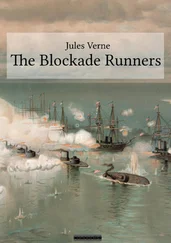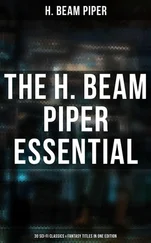“You saw me bring on board with the car several cases or receptacles, the use of which you may not have understood. They are five in number.
“The first contains about twenty-five gallons of water, to which I add a few drops of sulphuric acid, so as to augment its capacity as a conductor of electricity, and then I decompose it by means of a powerful Buntzen battery. Water, as you know, consists of two parts of hydrogen to one of oxygen gas.
“The latter, through the action of the battery, passes at its positive pole into the second receptacle. A third receptacle, placed above the second one, and of double its capacity, receives the hydrogen passing into it by the negative pole.
“Stopcocks, of which one has an orifice twice the size of the other, communicate between these receptacles and a fourth one, which is called the mixture reservoir, since in it the two gases obtained by the decomposition of the water do really commingle. The capacity of this fourth tank is about forty-one cubic feet.
“On the upper part of this tank is a platinum tube provided with a stopcock.
“You will now readily understand, gentlemen, the apparatus that I have described to you is really a gas cylinder and blowpipe for oxygen and hydrogen, the heat of which exceeds that of a forge fire.
“This much established, I proceed to the second part of my apparatus. From the lowest part of my balloon, which is hermetically closed, issue two tubes a little distance apart. The one starts among the upper layers of the hydrogen gas, the other amid the lower layers.
“These two pipes are provided at intervals with strong jointings of indiarubber, which enable them to move in harmony with the oscillations of the balloon.
“Both of them run down as far as the car, and lose themselves in an iron receptacle of cylindrical form, which is called the heat-tank. The latter is closed at its two ends by two strong plates of the same metal.
“The pipe running from the lower part of the balloon runs into this cylindrical receptacle through the lower plate; it penetrates the latter and then takes the form of a helicoidal or screw-shaped spiral, the rings of which, rising one over the other, occupy nearly the whole of the height of the tank. Before again issuing from it, this spiral runs into a small cone with a concave base, that is turned downward in the shape of a spherical cap.
“It is from the top of this cone that the second pipe issues, and it runs, as I have said, into the upper beds of the balloon.
“The spherical cap of the small cone is of platinum, so as not to melt by the action of the cylinder and blowpipe, for the latter are placed upon the bottom of the iron tank in the midst of the helicoidal spiral, and the extremity of their flame will slightly touch the cap in question.
“You all know, gentlemen, what a calorifere, to heat apartments, is. You know how it acts. The air of the apartments is forced to pass through its pipes, and is then released with a heightened temperature. Well, what I have just described to you is nothing more nor less than a calorifere.
“In fact, what is it that takes place? The cylinder once lighted, the hydrogen in the spiral and in the concave cone becomes heated, and rapidly ascends through the pipe that leads to the upper part of the balloon. A vacuum is created below, and it attracts the gas in the lower parts; this becomes heated in its turn, and is continually replaced; thus, an extremely rapid current of gas is established in the pipes and in the spiral, which issues from the balloon and then returns to it, and is heated over again, incessantly.
“Now, the cases increase 1/480 of their volume for each degree of heat applied. If, then, I force the temperature 18 degrees, the hydrogen of the balloon will dilate 18/480 or 1614 cubic feet, and will, therefore, displace 1614 more cubic feet of air, which will increase its ascensional power by 160 pounds. This is equivalent to throwing out that weight of ballast. If I augment the temperature by 180 degrees, the gas will dilate 180/480 and will displace 16,740 cubic feet more, and its ascensional force will be augmented by 1,600 pounds.
“Thus, you see, gentlemen, that I can easily effect very considerable changes of equilibrium. The volume of the balloon has been calculated in such manner that, when half inflated, it displaces a weight of air exactly equal to that of the envelope containing the hydrogen gas, and of the car occupied by the passengers, and all its apparatus and accessories. At this point of inflation, it is in exact equilibrium with the air, and neither mounts nor descends.
“In order, then, to effect an ascent, I give the gas a temperature superior to the temperature of the surrounding air by means of my cylinder. By this excess of heat it obtains a larger distention, and inflates the balloon more. The latter, then, ascends in proportion as I heat the hydrogen.
“The descent, of course, is effected by lowering the heat of the cylinder, and letting the temperature abate. The ascent would be, usually, more rapid than the descent; but that is a fortunate circumstance, since it is of no importance to me to descend rapidly, while, on the other hand, it is by a very rapid ascent that I avoid obstacles. The real danger lurks below, and not above.
“Besides, as I have said, I have a certain quantity of ballast, which will enable me to ascend more rapidly still, when necessary. My valve, at the top of the balloon, is nothing more nor less than a safety-valve. The balloon always retains the same quantity of hydrogen, and the variations of temperature that I produce in the midst of this shut-up gas are, of themselves, sufficient to provide for all these ascending and descending movements.
“Now, gentlemen, as a practical detail, let me add this:
“The combustion of the hydrogen and of the oxygen at the point of the cylinder produces solely the vapor or steam of water. I have, therefore, provided the lower part of the cylindrical iron box with a scape-pipe, with a valve operating by means of a pressure of two atmospheres; consequently, so soon as this amount of pressure is attained, the steam escapes of itself.
“Here are the exact figures: 25 gallons of water, separated into its constituent elements, yield 200 pounds of oxygen and 25 pounds of hydrogen. This represents, at atmospheric tension, 1,800 cubic feet of the former and 3,780 cubic feet of the latter, or 5,670 cubic feet, in all, of the mixture. Hence, the stopcock of my cylinder, when fully open, expends 27 cubic feet per hour, with a flame at least six times as strong as that of the large lamps used for lighting streets. On an average, then, and in order to keep myself at a very moderate elevation, I should not burn more than nine cubic feet per hour, so that my twenty-five gallons of water represent six hundred and thirty-six hours of aerial navigation, or a little more than twenty-six days.
“Well, as I can descend when I please, to replenish my stock of water on the way, my trip might be indefinitely prolonged.
“Such, gentlemen, is my secret. It is simple, and, like most simple things, it cannot fail to succeed. The dilation and contraction of the gas in the balloon is my means of locomotion, which calls for neither cumbersome wings, nor any other mechanical motor. A calorifere to produce the changes of temperature, and a cylinder to generate the heat, are neither inconvenient nor heavy. I think, therefore, that I have combined all the elements of success.”
Dr. Ferguson here terminated his discourse, and was most heartily applauded. There was not an objection to make to it; all had been foreseen and decided.
“However,” said the captain, “the thing may prove dangerous.”
“What matters that,” replied the doctor, “provided that it be practicable?”
Читать дальше












